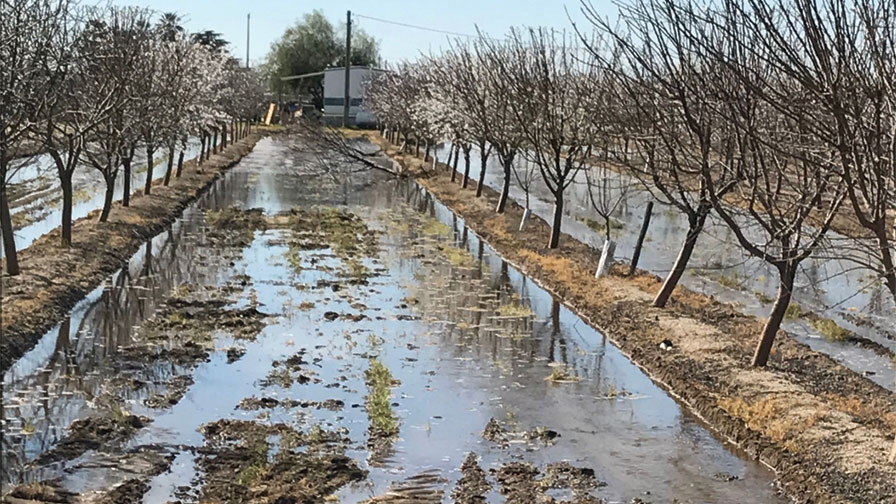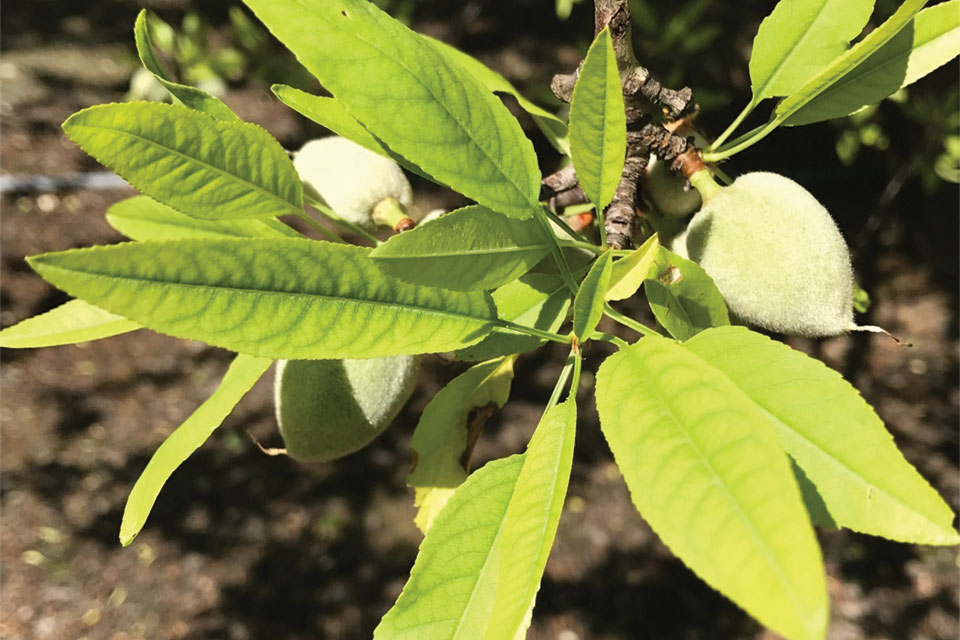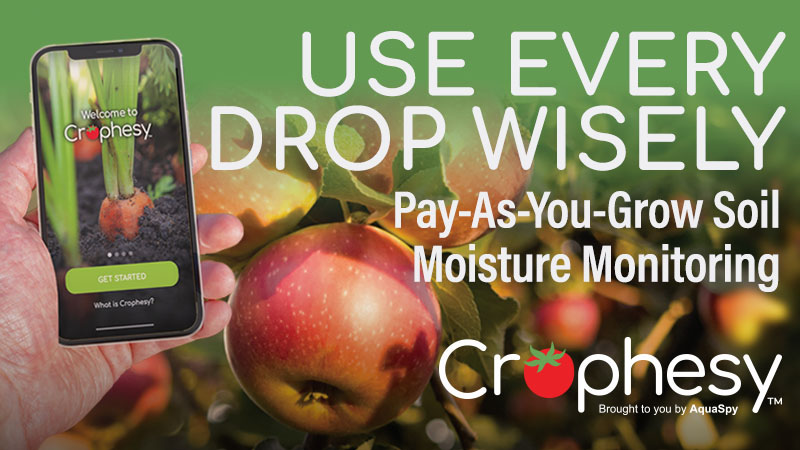Proper Almond Irrigation Practices for This Season

The pictures show how early irrigation began last season. You will notice a few of the pictures show irrigation taking place during bloom even before leaf out. (Photo: Photos: Mae Culumber)
An unusual amount of precipitation during late 2016 and early 2017 provided some much-needed relief to California’s Southern San Joaquin Valley, helping to recharge aquifers and restore water supply allocation.
In a report by University of California Cooperative Extension (UCCE) Fresno County Nut Crop Advisor Mae Culumber, “Tips for Better Orchard Irrigation Scheduling,” Culumber detailed the consequences of the wet conditions, showing that, despite the relief brought by the rain, there can be too much of a good thing.
Impacts of a Wet Spring
According to Culumber, spring water applications often far exceeded actual tree needs, and as a result, many orchards were showing signs of yellowing canopies soon after leaf-out. It was an indication of wet, anoxic soil, which can kill feeder roots and inhibit the uptake of nutrients. In some extreme cases, farmers lost trees to wet feet.
“The abundance of water from winter and spring rains and full water allocations was a welcome change after several years of drought, and many managers started irrigating early and often in the season,” says Culumber. “A common outlook is a need to get trees ‘caught up’ after the prolonged drought. However, trees do not have the ability to store water or repair past damage done by drought with supplemental water.”
By the middle of the growing season, many orchards were demonstrating symptoms of lower limb defoliation in their orchard blocks, says Culumber. Lower limb defoliation inhibits a tree’s ability to generate the energy reserves needed to produce fruiting buds, and ultimately nuts, in the following year.
“Over-irrigation early in the season followed by extreme temperatures and deficit irrigation close to harvest were thought to be largely responsible for much of the defoliation seen in blocks in our area this season,” she says.

This pictures shows the chlorosis in the fully expanded leaf tissues in response to saturated soils. (Photo: Mae Culumber)
Proper Irrigation is Key
Culumber’s report points to improper irrigation scheduling as a primary reason for many of these maladies.
“Over- or under-irrigating can be detrimental to tree health, growth, orchard uniformity, yield, and nut quality. Getting irrigation right (or at least in the ballpark) is one of the single most important management aspects over which a grower has control,” she writes.
Culumber says the long-term health and productivity of tree crops hinges on meeting plant water needs accurately, and over-watering crops can be a precursor to other maladies, such as stunting, nutrient deficiency, disease, and reduced nut set and quality.
“In my short time as a Fresno County Cooperative Extension Advisor, irrigation scheduling has been the primary issue I encounter on farm calls,” she says.
Culumber believes that if managers achieve greater precision in irrigating, they are likely to see a reduction in other problems throughout the life of their orchard.
Some growers may under-irrigate because of a lack of water availability. An underperforming well pump can lead to water flow capacities that are insufficient for meeting water use needs within the allotted irrigation schedule. Having a well pump tested to ensure it is working as efficiently as possible is an important step growers can take to avoid this issue.
Maximize Efficiencies
Culumber recommends looking into the Advanced Pumping Efficiency Program (APEP), which is designed to maximize agricultural irrigation efficiency and is funded by the California Public Utilities Commission. Information about having a pump tested and available subsidies can be found at PumpEfficiency.org.
Over-irrigating can occur for a number of reasons, says Culumber. Growers who over-irrigate may not be using monitoring tools, or they may be misinterpreting the information provided by those tools. If using surface water, they may not have control over the volume and timing of water they are allocated. Or, growers may have other objectives for water application, such as groundwater recharge.
The report outlined some of the tools that are available to growers to help them make decisions about when to irrigate and how much water to apply. Culumber recommends using indicators of plant water status and soil moisture monitoring in order to determine when to irrigate. Some commercially available tools include plant pressure chambers, dendrometers, and sensors to track soil moisture depletion.
The cost and time required to properly use such tools are possible obstacles for some growers, says Culumber. Taking the time to properly calibrate the information or use in an irrigation schedule can be a challenge.
“No single monitoring tool is perfect, and the best approach is to use a combination of soil and plant water status tools to make irrigation decisions,” she adds.
Preparing for This Season
Culumber says winter is a good time for maintenance practices, like repairing leaks and flushing irrigation lines to remove sand and other particles and precipitates.
“These actions will help ensure good water distribution uniformity next growing season,” she says.
In addition, Culumber recommends taking annual soil and water samples to help understand how soil characteristics may be impacting water infiltration and drainage and the frequency by which soil dries down.
Growers should also try to familiarize themselves with the information provided by the soil, tree, and atmospheric monitoring tools they are using or thinking about using in the future.
In regards to scheduling irrigation, the amount of water needed next year and the timing of application is dependent on several factors, including how much winter and spring precipitation is received and how much moisture is retained in the soil.
To help growers prepare, the California Department of Water Resources and the University of California Cooperative Extension are cooperating to provide Weekly ET (evapotranspiration) Reports to agricultural water users to help determine when to initiate irrigation and how much is appropriate for several different crops. The reports provide information about the estimated amount of water crops have used to date and the accumulated precipitation for the year. Managers can make an informed decision to initiate irrigation when crop water use (ETc) exceeds accumulated rainfall and water holding capacity in the root zone.










